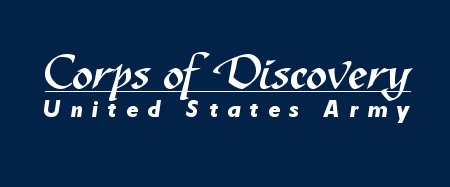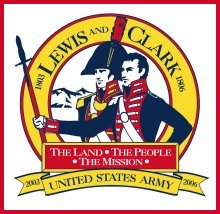1. Purpose.
a. General. This campaign plan prescribes the role the United States
Army will play in the Bicentennial Commemoration of the Lewis and
Clark Expedition, also known as the Corps of Volunteers of North Western
Discovery (1803-1806). This plan sets forth the opportunities and
responsibilities of the Army Components, Major Commands (MACOMs),
and other Army agencies involved in the Commemoration.
b. Commemoration. The purpose of the Army Commemoration is to:
(1) Honor and commemorate the Corps of Discovery (1803-1806).
(2) Educate the American public that the Corps of Discovery was
a military expedition conducted by Army soldiers.
(3) Recognize the multi-mission role of the US Army during the
military expedition.
(4) Showcase the important assistance the Expedition received
from the Native peoples along the route.
(5) Reinforce the Army values as demonstrated by the officers
and soldiers.
(6) Recognize the key role that NCOs played during the expedition.
(7) Highlight the dynamics of small unit leadership.
(8) Use the commemoration as an opportunity for Army recruiting
and retention.
(9) Recognize the civilian participants in the Corps of Discovery
and their contributions.
(10) Recognize the scientific advancements that the Corps of Discovery
provided.
(11) Recognize the Army's role in the continuation of the exploring
the West.
(12) Tie the Expedition's historical role to the modern Army.
c. Theme. The Army theme for the Lewis and Clark Bicentennial Commemoration
is: “The Land – The People – The Mission.” In 1803, President Thomas
Jefferson asked Congress to provide money for an expedition that would
establish friendly relations with the Indians of the Missouri Valley,
help expand the American fur trade in the region, and gather data
on the region’s geography, inhabitants, flora, and fauna. Jefferson
chose the United States Army to conduct the expedition, because soldiers
possessed the organization and logistics, the toughness and training,
and the discipline and teamwork to handle the rugged terrain, harsh
climate, and potential hostility that the expedition would certainly
encounter. The United States Army also embodied the national government’s
authority in a way that civilians would not.
(1) The Land.
(a) The Army’s key role in the “Opening of the West” – to include
scientific discovery.
(b) The Army as the “First Visible Symbol” of the new republic
in the American West.
(2) The People.
(a) The Army’s early reliance on NCOs – as the Expedition demonstrated.
(b) The pattern of mutually beneficial relations between the
Army and American Indians in route – and the ethnographical discovery.
(3) The Mission.
(a) The Army as the “Right Tool” for the arduous job: men, discipline,
organization, logistics, and values.
(b) The Army’s non-combat role – a precursor to the civil engineering
movement, et al.
2. Authority and References.
3. Terms and Definitions. See Annex B.
4. Applicability. This plan applies to all US Army components, MACOMs
and agencies, and specifically includes all personnel (active duty,
reserve component, and civilian) of the Department of Army.
5. Scope. This plan sets forth policy and provides guidance for Department
of the Army participation in the Commemoration.
6. Assumptions.
7. Commemorative Period. Consistent with Congressional support and
the Memorandum of Understanding between the various Federal agencies,
the cooperating Federal agencies agree to unify and coordinate their
planning efforts at all levels for the commemoration of the Bicentennial
to ensure consistency, avoid duplication of efforts, and to pool resources,
in order to carry out the purposes, goals, and activities of the commemoration.
a. Commanding General, US Army Center of Military History.
(1) The Chief of Military History, as Executive Agent, has overall
responsibility for the Lewis and Clark Commemoration for the US
Army.
(2) Reports periodically to the Lewis and Clark Executive Council
(LCEC) on the progress of the Army Commemoration efforts.
(3) Serves as Chair of the Lewis and Clark Advisory Group (LCAG).
b. Lewis and Clark Executive Council (LCEC).
(1) Chaired by the Director of the Army Staff, acts as the executive
policy making council, and provides overall guidance to the LCAG
and Commands.
(2) Council members represent Army components, MACOMS and
other agencies active in the commemoration.
(3) Conducts update briefings to the SA and CSA.
(4) Coordinates and tasks ARSTAF and Commands to support Army
Commemorative Events.
c. Lewis and Clark Advisory Group (LCAG).
(1) Primary advisory group to the LCEC.
(2) Members act as Commemorative representatives to parent Commands
and are responsible for current and timely information on all Federal
and Army Commemoration efforts.
(3) Advise Commanders on Commemoration activities.
(4) Act as liaison to, or leads Command Task Force in parent Command.
(5) Act as Commemoration representative to coordinate Army support
for the local commemorative activities of organizations, schools,
and the general public.
(6) Encourage installation and commands to publish articles in
organization magazines and become involved in commemorative activities.
d. Lewis and Clark Commemorative Office (LCCO).
(1) Primary office for all Army Commemorative initiatives.
(2) Reports to Chairperson, LCAG.
(3) Serves as the Executive Secretary for the LCAG.
(4) Serves as chief advisor to the Chief of Military History on
Lewis and Clark historical matters and interpretation.
(5) Represents the US Army at the annual Lewis and Clark Bicentennial
Council meetings.
(6) Serves as a voting member representing the US Army to the
Federal Interagency Group.
(7) Publishes historical material that emphasizes the Army’s role
in the Lewis and Clark Expedition.
(8) Establishes a Lewis and Clark link (from the US Army Center
of Military History Web Site) to inform soldiers, their families,
and the public of commemorative activities and the Army’s role in
the Expedition.
(9) Coordinates a public affairs plan with OCPA.
(10) Serves as the central repository and clearinghouse for information
pertaining to commemorative events, activities and programs at all
levels.
e. Chief, US Army Corps of Engineers, (COE).
(1) The Chief, COE, supports the Commemoration through its Lewis
and Clark coordination offices to take advantage of the public and
government interest, to improve existing recreational facilities
and visitor centers, as well as public education outreach programs.
(2) The COE serves as a voting member on the Federal Interagency
Group.
f. Commands.
(1) Command Historians will assist their respective Commands by
reviewing Lewis and Clark historical material and becoming conversant
on the values and themes adopted by the Army. Integrate Lewis and
Clark themes into mission specific or command historical requirements
and products.
(2) Commands will submit command approved commemorative events
to the LCCO for inclusion in the Army Lewis and Clark Commemorative
Events Calendar.
(3) Commands will allocate resources in their budget to fund their
planned commemorative events.
(4) Commands, when applicable, will establish a Commemoration
Task Force (CTF) to plan, execute, and coordinate the Command's
activities. The head of the CTF also serves as that Command's representative
to the LCAG.
(5) Commands will publish a Command Commemorative Community Relations
Plan that outlines participation in the Commemoration, to include
programs, events, activities and products. Provide a copy of this
Plan to the LCCO by 1 December 2002.
(6) Commands will disseminate appropriate articles, pamphlets
or flyers urging support and participation in the Commemoration.
g. Commander, TRADOC. Develop an educational curriculum for junior
officer, NCO and enlisted leadership courses, based on Lewis and Clark
values and themes for small unit leadership and cohesion, and the
importance of NCOs. Focus on the dynamics of decision-making, initiative,
responsibility, discipline, and other Army values and principles to
develop a comprehensive approach from the history and experiences
of the Lewis and Clark Corps of Discovery. Incorporate this curriculum
by FY 04 in all branch and development courses designed for junior
officers, NCOs and soldiers.
h. Commander, FORSCOM. FORSCOM units and soldiers, within the limits
of current resources and applicable laws and regulations, may be used
to support commemoration activities. The following support will be
provided under the authority of AR 360-51, AR 220-99, AR 360-5, AR
700-131, the Joint Ethics Regulation, and all other applicable guidance.
i. Army National Guard. Establish a state POC for the trail states
and other states wishing to participate in the Commemoration.
j. Office, Army Public Affairs.
(1) Coordinate public affairs activities within the Department
of the Army pertaining to the Lewis and Clark Bicentennial Commemoration.
(2) Develop a Commemoration support policy, in coordination with
the LCCO.
(3) Assist the LCCO in responding to media queries concerning
the Commemoration.
(4) Provide community relations guidelines for the conduct of
commemorative events.
(5) Schedule and coordinate appearances by the SA/CSA at national
and international events related to Commemoration.
(6) Encourage senior Army officials to include information on
Lewis and Clark in their speeches and publications.
(7) Ensure that the Pentagon tour guides emphasize Lewis and Clark,
and that appropriate exhibits and paintings related to the Corps
of Discovery are properly displayed during the commemorative period.
k. Office of The Judge Advocate, Department of the Army. Provide
timely counsel and support to the LCAG, regarding legal, regulatory
and ethical issues pertaining to the Commemoration.
l. Office of Congressional Legislative Liaison, Department of the
Army. Serve as the lead agency for providing DA input and liaison
with regards to congressional actions and initiatives pertaining to
the Commemoration.





